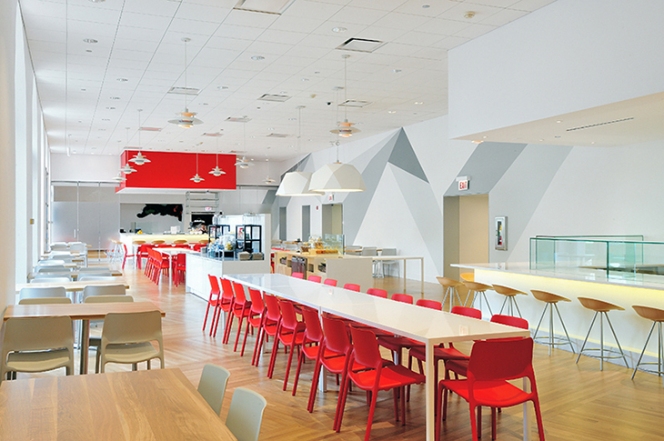Your Cart is Empty
Recent Articles
- Efficiency Meets Innovation: SketchUp 2024 Unveiled
- Maxon One Spring 2024 Release Packs Particle Power, Toon Shading, and More
- TurboCAD 2024 Unveiled by IMSI Design: Discover the New Features and Enhancements
- Exploring the Latest InfraWorks 2025 Updates
- Introducing the Latest Innovations in Autodesk's ReCap Pro 2025
- Discover the Latest Enhancements in Civil 3D 2025
- Exploring the Newest Features and Enhancements in Revit 2025
- Explore the Latest Features in Vantage 2.3 Update
- Explore the Latest AutoCAD 2025 Enhancements: Activity Insight, Smart Blocks, and Apple Silicon Support
- Unveiling Enscape 4.0: Revolutionizing Design with Unified Experience for macOS and Windows Users
5 Powerful Communication Techniques for Design Professionals
April 16, 2014 5 min read
Editor's Note: After a great conversation with Jason Dries-Daffner, Senior Director of Architecture at EDG, I asked him to sum up his best advice on how to communicate with clients. To learn more about EDG Interior Architecture and Design, check out their website and read my interview with Jason here.

Communication is the conduit by which we transfer design ideas to other people. Fundamentally, successful communication is about mutual understanding. Below are five common elements found in the design process, and some thoughts on how specific communication methods might increase mutual understanding among project stakeholders.
1. Clarify expectations early and often.
Don’t assume all project stakeholders have the same understanding, priorities and access to information. Ask to clarify and confirm at the beginning and throughout each phase of work. For example, one of our senior project managers, Jackson Butler, hands out a kickoff folder to his team at the beginning of each project. This folder includes the project management plan describing project goals, timelines, fees and deliverables. It also includes areas for individual team members to list what particularly high value work they can contribute and what they hope to gain from the project for their own professional development. Jackson’s most recent Marriott Hotel Great Room project just wrapped up Contract Documents a week early, with limited overtime (we are still are designers after all…) and with appropriate contingency fee to handle the inevitable construction phase changes. By clarifying stakeholder expectations early and often, Jackson now has a happy client, a great looking design and a proud team.

2. Work hard to understand the other people.
EDG’s president and CEO, Jennifer Johanson is a leader in the hospitality design world. Why? Because her communication of hotel and restaurant design is always focused on our clients and the end users. Whether in a team brainstorming session, a client presentation or a press interview, Jennifer consistently frames the discussion in terms of client operations and business goals as well as guest experience. Her communication is motivational and persuasive not because she is “selling” anything but because she works hard to understand the needs and values of others engaged in the conversation. Recent examples of the success of this approach are Elena and Pony Line an award winning bar and restaurant at the Four Seasons Hotel Buenos Aires.

3. Face to face, video conference, telephone, and email (in that order)
Communication can only be truly effective if there is a bond of mutual trust. Email can sometimes be a poor medium for communication. Tone is often misinterpreted and it does little to establish or maintain a personal bond between people. Early in a project, try to have face to face meetings, or at least a video conference. Being able to see other stakeholders’ expression and body language will help you better understand them. Once you have established mutual trust, email away, but don’t forget to regularly schedule video conferences or pick up the phone to make the human connection. We are working on several projects in Costa Rica and I had some on-site coordination meetings with client and local architect. Since I was able to meet these people in person, I feel not only a professional obligation to do my job, but also a strong personal commitment to Dennis, Francisco, Ronald and Andrea.

4. Are meetings worth it?
Face to face communication is invaluable (see above). Meetings can be a great way to collaborate, establish and review goals and progress, and create collegiality. However, they can also be a huge, expensive and pointless time sink. Plan your meetings for the right reasons, right length of time and right people. On the successful side, an EDG project manager will regularly meet together with the senior designer and job captain so that the three person leadership team can plan and review a project together. Those 15 – 20 minute informal sessions have huge returns on investment in directly advancing design and serving our clients. On the other hand, I have also been to large (10+ people) meetings where there is no clear goal or agenda and the facilitators are ill-prepared and clearly winging it. If you are going to invest in a meeting please consider: inviting only the critical stakeholders, establishing the goal of the meeting and sending out an agenda and documents to review in advance. This will help keep communication focused and yield a good return on time.

5. Never mind the fine print.
“…the contact says…”, “…it was in the specs…”, “…I sent you that email…”. Eliminate those phrases from your professional vocabulary. Being correct is irrelevant if you or others missed a goal. You will very quickly alienate colleagues and clients if you rely only on the fine print. Instead, be proactive IN ADDITION to having the fine print. For example, if the design or client operational standards require a tight and uniform grout line, yes of course document that in your drawings and specifications. Additionally, though, bring up the point during bidding and preconstruction meetings and walk the site with the GC and sub to see if the existing sub floor is appropriately level. Again, the goal is to establish mutual understanding. Burying important information does not help.

Keeping the goal of mutual understanding in mind, we will be prepared to communicate effectively. Pay attention to people who consistently get the most out of their teams and fellow stakeholders. These are the people who lead projects with beautiful design (including functional, innovative, delightful…architecture, products, systems, animations, ffe, graphics…). You will see that they clarify stakeholder expectations and put in effort to understand other people involved. They know how to harness communication opportunities and technology to build trust and rapport, how to leverage time spent in meetings and how to avoid something crucial getting lost in the fine print. If communication is the conduit by which we transfer design ideas, let’s do our best to keep it flowing.
References and suggested reading:
Getting to Yes, Roger Fisher, William Ury and Bruce Patton
Dare to Prepare, Ronald M. Shapiro with Gregory Jordan
Crucial Conversations, Kerry Patterson, Joseph Grenny, Ron McMillan, Al Switzler
Fierce Conversations, Susan Scott
The 7 Habits of Highly Effective People, Stephen R. Covey
Connect with EDG Interior Architecture and Design on Twitter and Facebook. And don't forget to register for our upcoming Hangout on Air: Innovative Workplace Design
Related articles
Also in NOVEDGE Blog

Maxon One Spring 2024 Release Packs Particle Power, Toon Shading, and More
April 10, 2024 4 min read
Read More
TurboCAD 2024 Unveiled by IMSI Design: Discover the New Features and Enhancements
April 10, 2024 2 min read
Read MoreSubscribe
Sign up to get the latest on sales, new releases and more …






